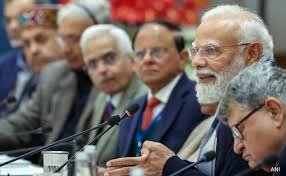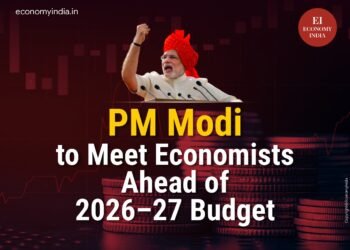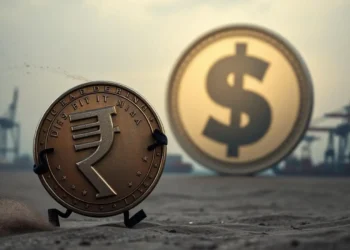New Delhi: Given the uneven domestic economic recovery, and a relatively larger output gap compared to pre-Covid levels, as well as higher inflation tolerance levels, rating agency ICRA expects India’s policy rate hike cycle to be shallower vis-a-vis the US Fed.
Aiming to view to addressing high inflation in the US, America’s central bank has recently hiked policy rates by a steep 75 basis points, while indicating that more rate hikes are likely in the coming days.
On the currency rupee, the rating agency expects the Indian rupee to trade between 77.0-80.0 against per US dollar in the remainder of the first half of 2022-23 – by September – amidst the global headwinds, it said in a report.
Also Read: Inflation to Peak Further Till December, Says RBI Governor Shaktikanta Das
Currently, the rupee is at 78.23 per US dollar and has reported multiple all-time lows in the past few days, data showed.
The RBI‘s large foreign exchange reserve is likely to prevent a disorderly depreciation of the domestic currency, the rating agency said in the report.
Typically, the Reserve Bank of India intervenes in the market through liquidity management, including the selling of dollars from the foreign exchange reserves, with a view to preventing a steep depreciation in the value of the rupee.
Further, on the government’s market borrowings, it said there have seen a significant increase during the post-pandemic period.
“While they eased in FY2022 revised estimate, they are budgeted to rise quite sharply in FY2023 to touch record levels. Besides, any fiscal slippage may put further pressure on the GoI’s market borrowings,” it said in the report.
Also Read: Indian economy may touch $30 trillion in the next 30 years, says Piyush Goyal
That said, it expects the interest rates on small savings schemes to be hiked for second quarter of current fiscal, given the sharp increases seen in the government bond yields of various tenures, to which such small saving instruments are linked.
In such case, an increase in small savings rates could lead to higher inflows into such schemes, limiting the need for additional market borrowings by the government, it added. (NDTV)















